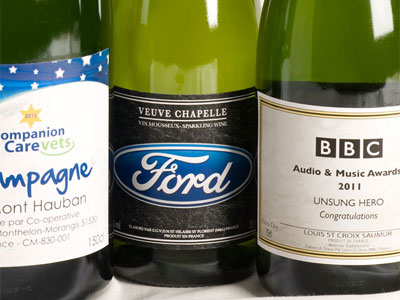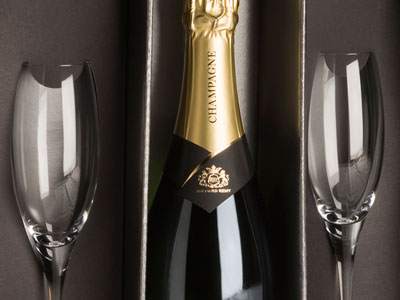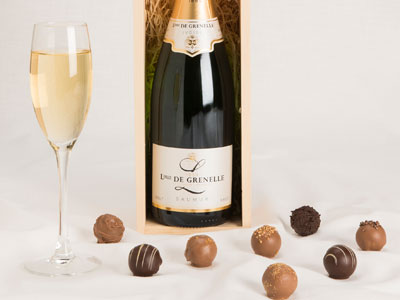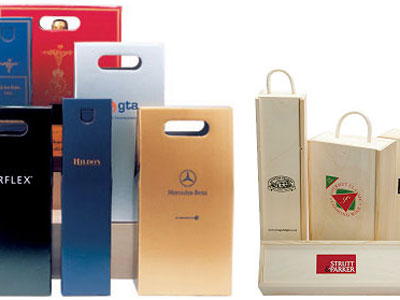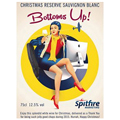A wine or champagne label has a vital role to play on a bottle as it can often be the only means you have to evaluate the contents before buying it. As wine or champagne are often judged by their label, it needs to be attractive, informative and compliant.
There are lots of regulations and strict guidance procedures around labelling. All wine bottles have to state the country of origin; the producer’s name and address; the volume of liquid in the bottle; whether the wine contains allergens, such as sulphites; and the alcohol by volume (ABV) level. The ABV is a useful indicator of the style of wine, such as light (12% abv) or full bodied (14% and over). All these details can be displayed on the front or back label of the bottle, but must be visible in one field of vision.
What else can you learn from a wine or champagne label?
A wine or champagne label will typically have the following components: Who made it (the brand or producer); where it was made (geographical indicator); the grape variety it is made from; and its age (the vintage).
The brand or producer
If the brand or producer is famous, their name will usually be displayed prominently on the front label to stand out. For lesser-known champagne or winemakers, the most prominent wording on the label may be the grape variety or region, with the producer’s name in small print.
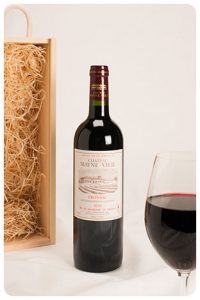 Grape variety
Grape variety
The type of grape used plays a big part in the character and flavour. However, climate affects the taste too, so a chardonnay from southern Australia won’t taste the same as a chardonnay from Burgundy. Some producers, particularly in France, don’t even mention the grape variety because generally they are not permitted to do so. White Burgundy or Chablis for example can only made from the chardonnay grape whilst Sancerre and Pouilly Fume can only be made from sauvignon blanc.
Geographical indicator (GI)
Most labels specify which country and region the wine comes from. The GI can give you a good idea of how the wine should taste, as the growing conditions, weather and winemaking traditions of the area will all affect its makeup.
On the label of this gorgeous red wine gift we offer, you can see that the producer is the prestigious Château Mayne-Vieil in Fronsac, which is in the Bordeaux region of France. The term Mis En Bouteille on the label means ‘bottled’ in French. If you see this phrase, it means it was bottled at a particular estate and can indicate a high-quality wine.
Vintage
The vintage is the year the grapes were grown and picked. A vintage can affect the wine’s taste and quality, because of the weather that affects the vines throughout the growing season. The vintage can also help you decide when to drink the wine. For instance, sauvignon blanc is made to be drunk young and fresh. So, if the bottle is over three years old, it’s probably not at its best. If there isn’t a vintage on the label, it’s a non-vintage wine, usually made from a blend of grapes from different years to maintain a consistent flavour or ‘house style’. This is the norm for champagne where you will often see NV (non vintage) on the label.
Of course, a label will never tell you the whole story, so do feel free to contact us for specialist advice on choosing the right bottle of wine or champagne for you.
Also read: How to decipher a champagne label
Personalised front labels for corporate wine and champagne
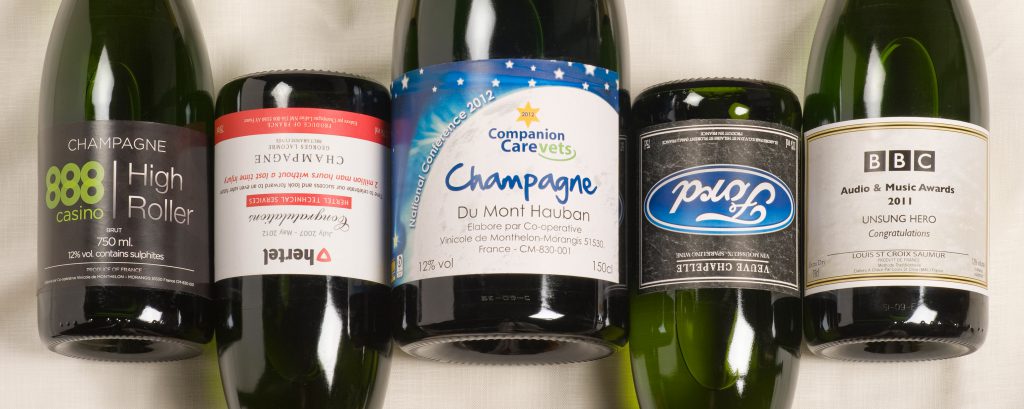
At Wines Select we ship many of our wines and champagne with a “Back Label Only” where the required essential legal information is displayed. This means we don’t need to include any of those details on the front label unless you specifically want us to. It gives you complete freedom in the design of your personalised front label for your bottle of wine or champagne.
You can have a unique, bespoke, full-colour label, branded with your logo and designed to your specific requirements. You can have any messaging on the front label, subject to the space available. We only customise the front label because the back label describing all the details of the wine inside the bottle stays the same, so you and the recipient can be assured of the wine or champagne’s quality and provenance.
For more information on creating your own personalised corporate wine or champagne labels please call us on 0330 133 5135 or email karen@winesselect.co.uk

